Stay in the know on all smart updates of your favorite topics.
Smart City Haarlemmermeer - Digital Society School project
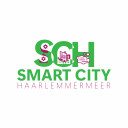
In large and diverse public organizations like the Gemeente Haarlemmermeer, communication can sometimes be hindered by silos. Different departments or teams in the organization may work independently leading to a lack of information sharing and coordination. With so many channels and platforms available, it can be difficult to filter out the information that is relevant and important to employees. This can lead to information overload and make it difficult for employees to stay updated on important updates.
Thus, the trainee team from the Digital Transformation Traineeship Programme at Digital Society School embarked on a challenge on how Gemeente Haarlemmermeer can be facilitated to become a smarter, more connected, transparent and digitally inclusive organisation.
Read more about the project on the website of Digital Society School!
Pientere Tuinen

Pientere Tuinen is een 3-jarig project dat begin april 2023 is gestart. Tot eind 2023 kunnen nieuwe deelnemers aansluiten bij het grootste participatieproject in Nederland. Pientere Tuinen is een samenwerking van 7 publieke en private partijen.
De aanpak in Pientere Tuinen draait om drie samenhangende onderdelen.
1. Data verzamelen met een slimme sensor en een interactief/educatief dashboard van de eigen tuin voor de individuele inwoner,
2. Kwantitatief (data-analyse) en kwalitatief (interviews/surveys) onderzoek naar strategieën voor een gezonde leefomgeving en duurzame gedragsverandering,
3. Advies op maat aan bewoners over de inrichting en het beheer van de tuin
Het doel van Pientere Tuinen is een groenere, gezondere leefomgeving te creëren door het bewustzijn en de motivatie bij tuinbezitters te vergroten. Dat doen we door data te verzamelen, onderzoek uit te voeren en meer maatwerk te bieden in de advisering en voorlichting aan bewoners.
Enkele voordelen van uw deelname aan Pientere Tuinen op een rijtje
- Tuinbezitters krijgen een bodemsensor die drie jaar lang hitte, bodemkwaliteit en het vochtgehalte meet, waarvan resultaten zichtbaar zijn op een dashboard
- Tuinbezitters krijgen (mede op basis van de data) specifieke voorlichting voor het vergroenen van de tuin door middel van tuintips, stappenplan en mogelijke (wijk)workshops
- Deelnemende organisaties zijn onderdeel van het grootste participatieproject van Nederland met ca. 5.000 deelnemers en meetpunten door heel Nederland
- Deelnemende organisaties worden betrokken bij twee langdurige, landelijke onderzoeksprogramma’s naar motivatie voor vergroening en gedragseffecten van verschillende interventiestrategieën, en data-analyses van milieu- en gezondheidsaspecten
- Als organisatie bent je zelf als partner zichtbaar in een landelijke PR- en communicatiecampagne rondom het project.
- Je leert zelf binnen de community over structurele, duurzame vergroening met uw inwoners onder andere van de onderzoeksprogramma’s en andere projectpartners
Mobility Challenge: How do we make Carbon-neutral mobility to large events the norm?
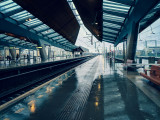
The climate is changing and Amsterdam is getting busier and busier. We are faced with the task of keeping the city, including Southeast, liveable, safe and accessible at the same time.Various events, concerts, sports competitions attract millions of visitors to Southeast every year. To bring all these visitors to the city in a more sustainable way, the municipality of Amsterdam, Johan Cruijff ArenA, Ajax, NS, GVB, Transdev, Transport Region Amsterdam and Amsterdam Smart City have joined forces. Their ambition is to make CO2 neutral travelling to and from large events the norm by the end of 2023.
Alternating travelbehaviour requires a diverse coalition
The car is currently still the most widely used means of transport in Southeast. The transition to sustainable mobility requires cooperation between (semi)public and private parties and the strengthening of sustainable alternatives to the private car. While reducing car- and parking accessibility, and placing bycicle parking options lays within the power of the municipality, the public transport providers posess all travel data and have the power to expand their transportcapacity. Moreover, to convince the supporters and fans to change their behaviour, you need the direct communication power from Ajax (Football Club) and the Johan Cruijff ArenA. Hence, you could say the challenge within the challenge is to find new forms of collaboration, data sharing, and fine-tuning the alignment of measures.
Short and long-term measures
The coalition of partners have developed an action plan and analysed crowd-and travel behaviour. During 2023, these findings initiated the shaping of first measures to influence the mobility choices of visitors. During the first pilot event at the end of May, bike parking facilities will be expanded and group transportation will be aranged for those living in so called 'public transport desserts'.
When speaking of long(er)-term measures, one could think of time-adjusted public transport supply, personal (digital) travel advice, and campaigns through Ajax and its supportersbase to raise awareness and appreciation of car-alternatives.
BewustwordingsModel Smart City

Hoe slim is de ideale leefomgeving wat jou betreft, nu en in de toekomst? Wat betekent dat voor o.a. je strategie, diensten en technologie?
Vanuit phbm voegen we graag een gereedschap toe aan jouw Toolbox voor Smart City-vraagstukken. Eén waarbij we het voorstellings- en inlevingsvermogen activeren en welzijn centraal staat: het BewustwordingsModel. Dit model maakt de positie en wensen van jou en de ander expliciet en voorkomt dat er ruis ontstaat over het niveau van ‘slimheid’ in de leefomgeving. Door de toelichting van de passende organisatie, samenwerking, strategie e.d. bij de niveaus ontstaat een scherp beeld van wat het gekozen niveau betekent voor het individu, de organisatie of zelfs de samenleving als geheel. Eén van de centrale vragen bij het model is: hoe ‘smart’ wil je zijn en waar zit de optimale balans tussen mens en technologie?
Eerste gepubliceerde versie is tot stand gekomen samen met partners in de City Deal (‘Een slimme stad, zo doe je dat’). Het laat op vijf niveaus zien in welke mate een organisatie of bedrijf slim is. Eén van de doelen hiervan is om te bepalen of opdrachtgever en opdrachtnemer dezelfde taal spreken. Vanuit phbm zijn we doorgegaan op het model en hebben onder andere ethiek en mobiliteit als pijlers toegevoegd.
Het model is openbaar inzichtelijk, phbm begeleidt graag in het proces om samenwerkingspartners gezamenlijk bewuster te maken op welk niveau ze staan (gebruikmakend van het model) en met welke ontwikkelingen je rekening kan houden in het vraagstuk wat op tafel ligt (op vlak van organisatie, diensten of ethiek bijvoorbeeld).
Open Call: Create impact with the European CommuniCity project!

Does your organisation work with vulnerable target groups in Amsterdam, or are you a tech company with great ideas for digital solutions for this group? Create tech applications together for the challenges of vulnerable communities during the European CommuniCity project.
From 28 February to 31 March, you can submit your proposal for one of the challenges to CommuniCity for a chance to win a €12,500 grant to test your idea in practice.
How does it work?
- Companies or organisations submit their proposal via the CommuniCity website;
- The submissions are assessed against the set criteria and thus the winners are selected;
- The winning entries receive a grant of 12,500 euros to develop and test their solution together with the target group in Amsterdam.
For more information about the project, the challenges for Amsterdam and application conditions check the website below!
Research Interview on Digitalization and Big Data in City Administrations
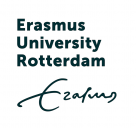
My name is Joe Calodich and I work as a researcher at Erasmus University Rotterdam in the research group Vital Cities and Citizens. I am currently looking for members of the city administrations in Amsterdam, Rotterdam, Prague, Tallinn, Vienna, Zurich, Brussels, or Munich who are interested in participating in a research interview.
The study which I am asking your participation for focuses on how large European cities have undertaken the digitalisation process of the public administration and how this process has affected the workings and the policies. I would also like to learn about some concrete examples on the use of big data related to this digitalisation process.
I hope to complete the interviews by the end of February 2023. Each interview will last between one hour and fifteen minutes and one hour and a half. The interview will be recorded and the content will be exclusively used for academic purposes (analysis, scientific publications, presentations, reports) and within the boundaries of the study’s goals. The gathered information will be treated by complying with anonymity and confidentiality criteria as defined in the social sciences regarding the use of personal information.
If you, or a colleague, is interested in participating, please send me an email at: 627583jc@eur.nl.
I look forward to hearing from some of you soon!
Local energy systems challenge: How to organize collaboration and knowledge sharing for the creation of local energy systems?

The climate crisis and current energy prices are stimulating a rapid shift from gas to electricity. This shift is happening quicker than expected and therefore has caused grid congestion.
Optimization of local energy usage, production, and exchange is important for tackling grid congestion. It can also stimulate the usage of sustainable energy resources and lower the costs of energy. However, optimization requires intensive collaboration between local stakeholders. It also requires them to take the common good into account instead of their self-interest.
Properly organizing these types of collaboration on the local level is therefore very challenging. There is a need to create a (as far as possible) standard approach with best practices and collaboration between the government, grid operators and the local communities. This challenge aims to create a collaboration between people working with Lokal Energy Systems (LES), to help them share their knowledge and learnings, and to empower people who want to create a LES of their own.
Responsible digitalisation challenge: How to make digital systems more human-centric?

Technological and innovative developments are moving faster than ever before. As a government, you want and need to keep up with these developments. At the same time, the use of digitalisation and data often leads to undesired results, increasing the distance between citizens/entrepreneurs and the government.
The municipality of Haarlemmermeer is shifting her focus from 'the system is central, people have to become more digitally savvy to 'people are central, our systems have to become human-centric’. The underlying question is: how do you really put people at the centre of digitalisation and the design of digital systems?
Do you want to know more or contribute to this challenge? Contact me via sophie@amsterdamsmartcity.com or let me know via the comments below.
Project’s current phase
Jeroen Brink and Christine Groothuis from the municipality of Haarlemmermeer introduced this challenge to the Amsterdam Smart City network on the 7th of November, 2022. During a co-creation session, we discussed that there are two main elements of this complex challenge that we would like to focus on. On the one hand, we’re talking about a radical and fundamental shift. A different way of thinking within governmental institutions. This shift requires a more philosophical and substantive conversation about how we would like our digital public space and systems to look like. But on the other hand, we want to think big but also start small. Therefore, the municipality of Haarlemmermeer would like to embrace a real-life case to bring human-centred digital systems to life.
On the 1st of December, we organised a follow-up session with Amsterdam Smart City partners. During this session, Max Kortlander (Waag) presented the Public Stack. This project puts the public value at the centre to create open, democratic and sustainable digital public spaces. Following this introduction, we did a futures-thinking exercise led by Sacha van Tongeren (Kennisland), to think about how we want the digital public space to look like in the future. And additionally, we used empathy maps to synthesize our collective knowledge about our audience, which brought us closer to a common understanding of who they are.
Responsible smart doorbells

Photo: Daan Rozinga, The Incredible Machine
The Responsible Sensing Lab is currently working on a few projects regarding smart doorbells.
Smart doorbells are like a security camera's, but available for everyone. Always on, and owned by private parties, the smart doorbell is destined to have an impact on our privacy. As of now, there could be thousands of smart doorbells in Amsterdam, filming public space. We don t have a clear view on the numbers, and we do not know what the owners do with the collected data. Smart doorbell owners are often not aware of the privacy issues.
One of the Responsible Sensing Lab's projects is Shutterring. The Shutterring project aims to make smart doorbells more responsible by ensuring the privacy of bypassers and owners while keeping the main functionality of the device intact. Shutterring is a design by The Incredible Machine.
Inspired by Shutterring, the Lab has started another project regarding responsible smart doorbells: Challenging the design of smart doorbells. In order to challenge the current design of smart doorbells (IoT doorbells with integrated cameras) a few alternative smart doorbells have been created through speculative design. The goal of this project is to kickstart a conversation about how to deal with the presence of smart doorbells in the city of Amsterdam. How could smart doorbells be designed in a way that they align better with the values of the city and its population?
The Responsible Sensing Lab team will present both their smart doorbell projects during the demo day on 11 October. Stay tuned!
CleanMobilEnergy – A Smart Energy Management System integrating renewable energy and electric vehicles.

Across North West Europe, cities are increasingly investing in renewable energy production and charging infrastructure for electric vehicles. However, the control systems for energy generation, energy utilisation, energy storage and electric vehicle charging work are currently separate from each other. This results in high costs and CO2 emissions due to energy inefficiencies.
Electric vehicles are mostly powered by fossil fuel generated electricity. At the same time, renewable energy is inefficiently utilised because production and demand are not synchronised across the city.
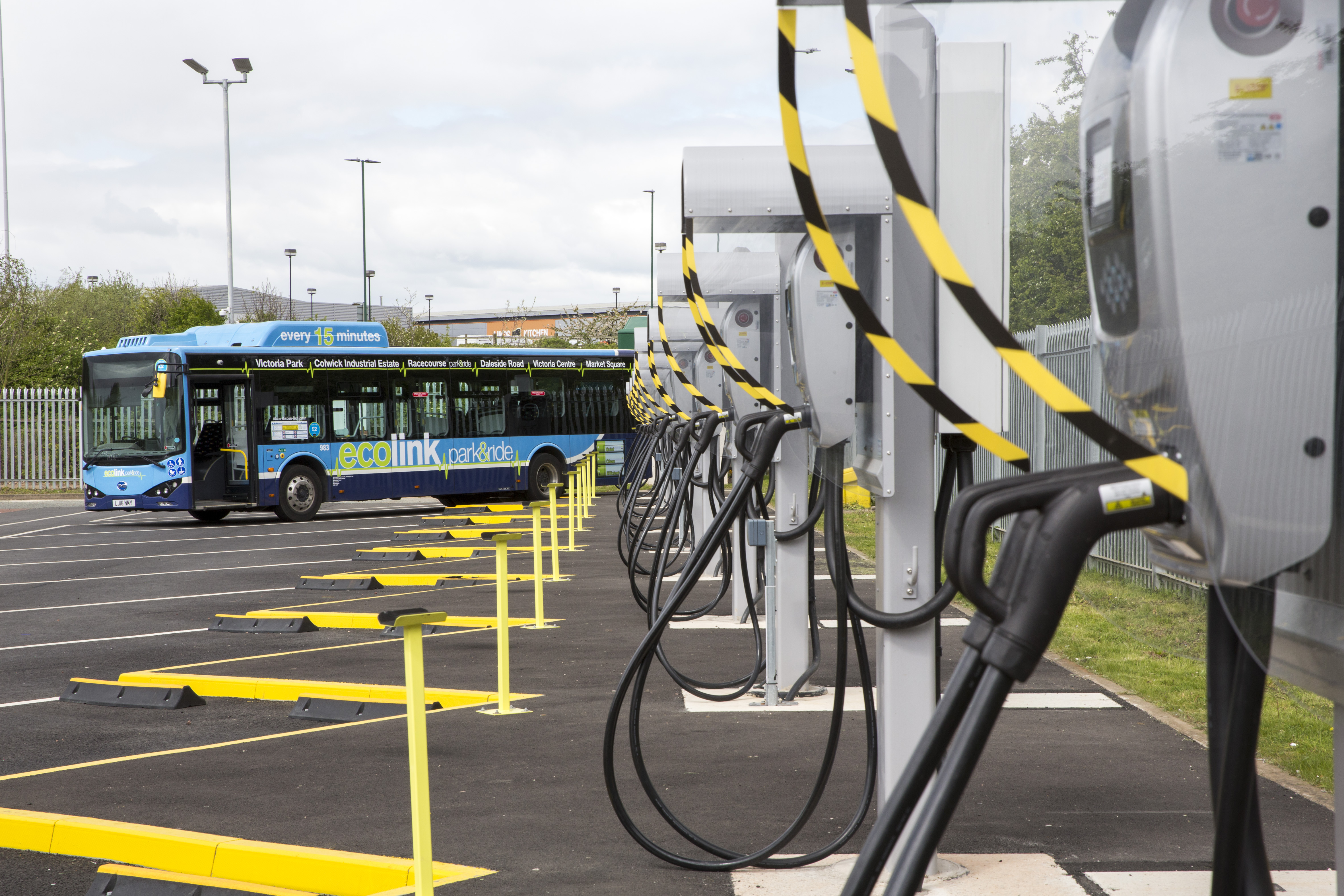
The project CleanMobilEnergy will integrate various renewable energy sources, storage devices, electric vehicles and optimisation of energy consumption through one unique smart energy management system. The development of this intelligent Energy Management System (iEMS) will increase the economic value of renewable energy and significantly reduce CO2 emissions.
The iEMS will assure the smart integration through interoperability based on open standards for data flows and analysis tools.CleanMobilEnergy will make it possible for renewable energy sources to be used locally, so electric vehicles can be charged with 100 % renewable energy offered at an optimum price. Electrical energy from the grid will only be required when prices are low or renewable energy sources are not available, the iEMS monitors and optimises the system 24hours a day, 7 days a week.
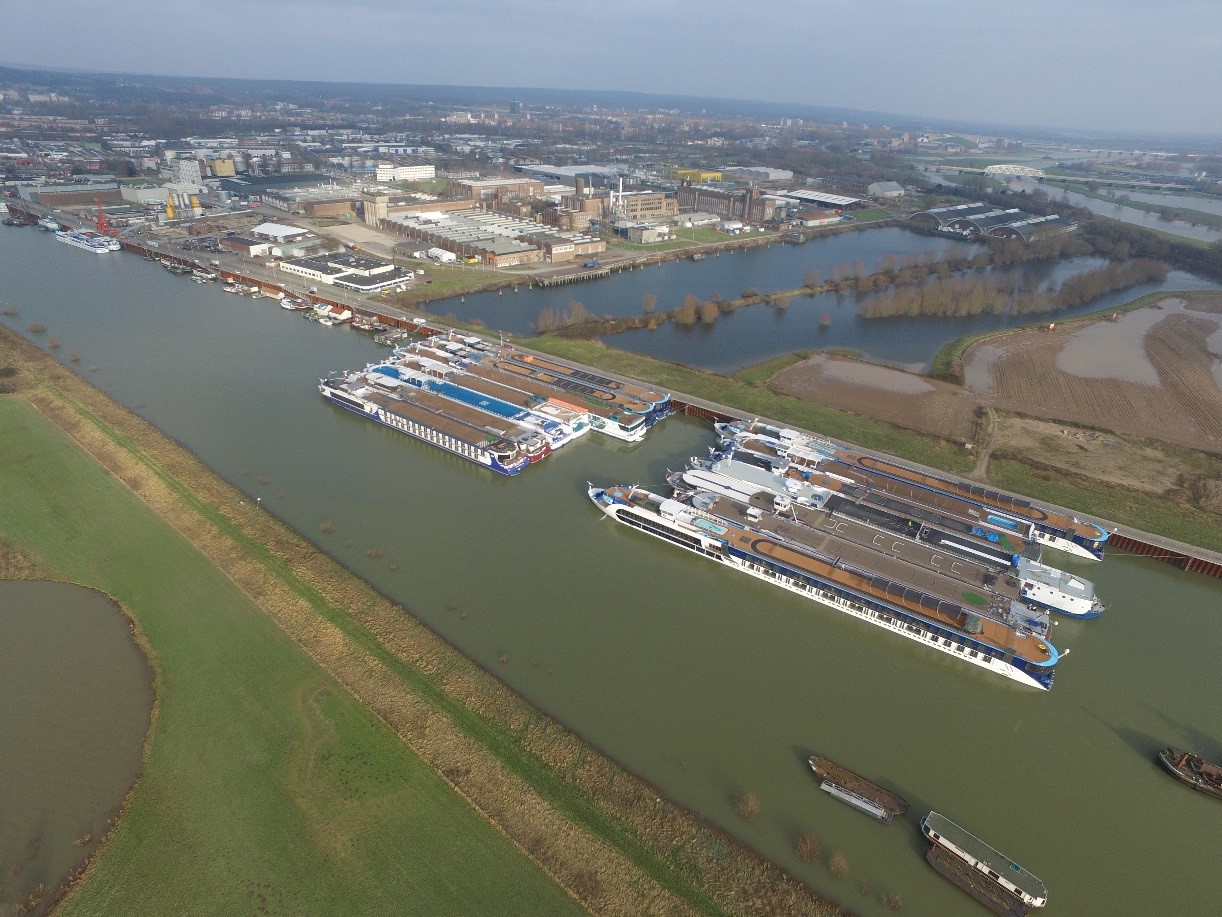
One generic transnational iEMS will be adapted to the 4 specific City Pilots, in Arnhem, London, Schwäbisch Gmünd and Nottingham. These pilots range from small towns to large cities. The 4 City pilots cover different types of renewable energy, storage and electric vehicles as well as different contexts and diverse city environments.
The City Pilots will utilise different state-of-the-art storage media in various environments, which are representative of North West Europe and are easily replicated in other cities across Europe. Specifically in London and Nottingham, for example, electric vehicles themselves will be used to power the buildings and depot by using innovative bi-directional chargers controlled by the integrated energy management system iEMS.
In Arnhem, on the other hand, renewable energy will be supplied to ships in the harbour adjacent to its industrial area. These pilots were chosen to represent a wide range of city sizes and environments, which are essential to developing a widely applicable system for future implementation across Europe.
Open Database of Bicycle Infrastructure Manuals

500+ cycling infrastructure documents from all over the world, and growing. Cycling infrastructure design manuals, strategy guides and more all curated in one easy-to-use database.
How can parametric analysis optimise urban design of Schinkelkwartier - the best masterplan in the Netherlands in 2021

On Thursday, March 17 Grisha Zotov pitched some of the dilemmas his team encountered during the process of urban design. Among others, he touched upon densification and building height as aspects that influence intensity of human interaction.
Located in the former industrial zone, Schinkelkwartier is an example of inclusive and interdisciplinary redevelopment. Destined to be a diverse mix-use hub, Schinkelkwartier will develop in several phases during 25 years. At an early stage local stakeholders and neighbors of the area were involved.
On behalf of Architectural Prescription Grisha raised questions about opportunities and risks offered by water-related location and complexity due to the amount of interested parties.
Suggestions, ideas and feedback are always welcome.
Local or guest, reach out and share what you think!
User-Centered Public Engagement Toolkit

Open access toolkit of people-centered methods for urban planners, designers, and advocates to make cycling inclusive and accessible to all.
Jonge talenten maken het verschil
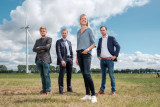
De jeugd heeft de toekomst en wil een bijdrage leveren aan een duurzamere maatschappij. Ze snappen dat een integrale aanpak en vergaande samenwerking tussen overheden en organisaties uit de energiesector, mobiliteit, gebouwde omgeving en industrie nodig is om de doelen uit het Klimaatakkoord te realiseren.
Binnen het Nationale Energietraineeship werkt op dit moment een groep jonge ambitieuze talenten iedere vrijdag samen aan projecten. Ze leren op deze manier over grenzen kijken, grenzen van organisaties, grenzen van rollen en functies, hun eigen grenzen. Samen vormen ze een netwerk over de gehele keten.
Hier vind u een overzicht van de projecten waar ze mee bezig zijn. Wilt u een talentvolle trainee inzetten op uw eigen projecten? Kijk dan verder!
Building a shared vision of the city - with LEGO!
Building the largest interactive LEGO model of the future city ever!
Imagine a model of the city; however, instead of a literal representation, this is a sculpture that holds ideas and dreams from citizens, policymakers, entrepreneurs and visitors about what the city might be like after we solve major transitional challenges (e.g. sustainability, energy, equality, smart).
What would it feel like to be in this city? What do people wish this future city to become?
the goal
A model of the city that contains the ideas that a diverse group of people have about how the city might emerge from major transitional change like climate adaptation, sustainability, equality, smart. Imagine the city from what might be and what opportunity change offers.
the form
A room-sized model built with LEGO in a public space and with interactivity (e.g. app / QR link / AR) to share the stories that this model contains.
the process
Lego is an powerful way to evoke and capture stories about how people think about something. Through a series of workshops, people from all parts of the city will be invited to share how they think about the future of the city and capture their stories in a collective model. An interactive installation opens up those stories to passers-by and other participants.
partners
finance, organisational, tech
call to action
Get in touch if you want to contribute to the realisation of the largest LEGO city vision model ever!
Intelligent Transportation System – Best Option for Smart Cities

Growing population, aging infrastructure, lack of mobility-related resources, and inefficient transport networks are leading to higher traffic congestion, road safety, and supply of mobility services in urban areas. It has become important for cities to look for smart mobility solutions to tackle these problems. Intelligent Transportation System is one such innovative concept that enables reliable and more personalized travel experience to move around in cities. Let’s have a look at the concept in detail.
What is an Intelligent Transportation System?
Intelligent Transportation System (ITS) strives to innovate, plan, operate, evaluate, and manage transportation systems by leveraging advanced information and communication technologies. ITS refers to the use of technology to collect and analyze information related to the sector to deliver integrated transportation solutions.
It focuses on various modes of transportation, infrastructure, vehicles, traffic management, stakeholders, and smart mobility. From a holistic point of view, it rectifies errors related to transportation, infrastructure and enables systematic management of the entire transport system by leveraging a wide range of technology. It is one of the important components of many innovative transportation solutions like Mobility as a Service, Connected, and automated mobility.
Moreover, effective use of infrastructure, capacity, technology in ITS requires a lot of planning well in advance by ITS specialists. That can be implemented by collaboration or public-private partnerships. Because there are so many things that need to be taken into consideration while implementing ITS, e.g., transport modes, design, routing, vehicles, technology type, and traffic flows, to make transportation safe and well-coordinated.
What is the need For ITS?
Transport authorities continue to raise the bar for safe and hassle-free transportation for commuters, but there are other challenges that commuters face related to urban congestion, inadequate road infrastructure, aging infrastructure, road safety, inefficient public transportation, and higher energy consumption. ITS can play an important role in solving these problems and better manage and control the transportation systems in real-time.
ITS facilitates new opportunities and more transportation choices integrated with easy-to-use technology. It is a multi-disciplinary concept that presents much-needed and cost-effective transportation solutions for smart cities. ITS can:
- Use resources and infrastructure effectively (existing as well as new)
- Plan, design, and implement comprehensive transportation systems
- Offers multi-modal, adequate, and on-demand transportation options
- Enhance public transportation management and its attractiveness
- Combat urban congestion
- Improve road safety and security
- Reduce fuel and energy consumption levels
- Control and manage traffic in the cities
- Make transport safe, efficient, manageable, and sustainable
Van Afval naar Oogst

We gooien in Amsterdam nog steeds ons gft-afval bij het huishoudelijke afval. Zonde vinden wij! Van dit gft-afval kan namelijk goede compost gemaakt worden. Daarom zijn we in mei 2020 samen met Stichting Onschatbare Waarde van start gegaan met het project Van Afval naar Oogst.
De centrale locatie van het project is in de buurttuin van I Can Change The World With My Two Hands, een initiatief van Onschatbare Waarde, in Amsterdam West. Onze gezamenlijke ambitie was 100 Amsterdammers te betrekken bij afvalscheiding en hergebruik. Meer dan 100 mensen hebben zich aangemeld en leveren nu wekelijks hun gf-afval in bij de buurttuin waar waardevolle compost van wordt gemaakt.
De Gezonde Stad werkt aan een groene, circulaire en inclusieve stad, niet door er lang over te praten, maar door te doen, samen met een community van bewoners, bedrijven, overheden en andere organisaties. We planten bomen, leggen buurtparken en moestuinen aan, we organiseren events om lokaal voedsel op de kaart te zetten, we zijn trekker van het platform Van Amsterdamse Bodem en we sluiten kringlopen, zodat afval weer tot iets waardevols kan worden omgezet.
Volg ons op social media of check degezondestad.org om op de hoogte te blijven.
Code the Streets - Creating innovative solutions for sustainable, inclusive and safe mobility.

As Amsterdam’s metropolitan area continues to grow, so do traffic related issues such as congestion, crowded streets, and increasing pressures on fragile infrastructures. Just like cities worldwide, the City of Amsterdam is faced with the challenge of finding better ways to manage urban mobility. Code the Streets wants to support cities with this challenge by bringing together cities, mobility providers and science to create sustainable and inclusive mobility solutions that keep cities liveable, now and in the future.
Code the Streets is working on improving an already existing navigation app by adding data about school zones, fragile infrastructures, congestion and pollution. We want to stimulate car-users to choose an alternative route, for example one that avoids school zones or vulnerable city infrastructure. That way we work to towards a more sustainable way of driving and make the streets of Amsterdam safer and less crowded. Starting in autumn, we will be running pilot programs testing the application in Amsterdam. Interested in trying the app? Sign up here.
Code the Streets is an European EIT Urban Mobility Project bringing together partners from Amsterdam, Helsinki and Budapest to work on innovative solutions for sustainable, inclusive and safe mobility.
Note from ASC: What do you think? Let’s hear it in the comments!
Management Laboratory: Creation of New Businesses.

Hello entrepreneurs.
I am looking for partners to generate brainstorm. And create a global new business project.
Interested to know more, send an email to
motivaco@gmail.com
Simple Sensors for responsible sensing

City officials require sensor data to optimize operations, plan projects, or measure effects of interventions. Citizens often do not notice the sensors deployed by the City in public space. Also, the benefit for the public is not directly obvious to city residents or immediately shown by the sensing systems in place. Namely, in many cases only after data is processed, it informs an action that affects citizens.
Public concerns about sensors are often connected to concerns about potential action (to be taken by, for example, city officials), and that the action has negative implications. With ‘Simple Sensors’ we address these concerns.
The Simple Sensors project, which is part of the Responsible Sensing Lab, investigates these questions: What if sensors are designed to be seen? What if they communicate clearly what data they collect and how? And what if sensors invite you to interact with them?
Modules for responsible and ‘simple sensing’
Simple Sensors consists of a family of modules, designed by The Incredible Machine, that can be combined: some modules improve transparency over what data is being collected, other modules encourage interaction, and some modules just make it understandable how sensors work. The Simple Sensors family allows the City of Amsterdam to design sensors to fit any context or purpose.
A privacy friendly alternative for CCTV
The first Simple Sensor prototype called millimeter wave (mmWave) has been developed as a proposal for the City’s crowd management sensor at the Marineterrein Amsterdam Living Lab. It consists of four modules: 1) sensor module 2) transmission module, 3) data module, 4) threshold module... Continue reading about the project on our website >>
Stay up to date
Get notified about new updates, opportunities or events that match your interests.

